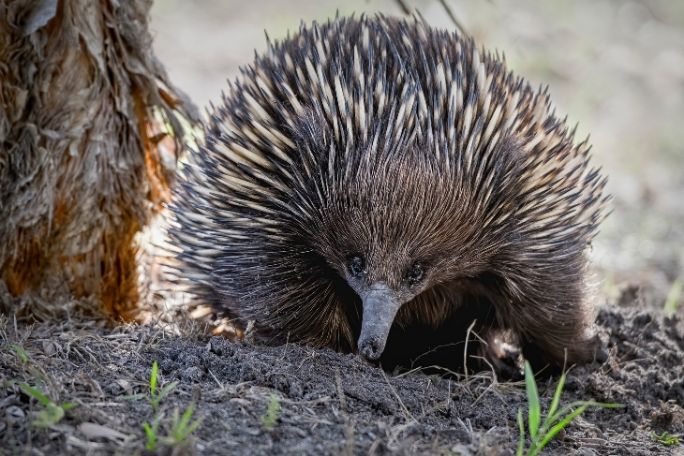Lesson summary
Students explore animal adaptations and how these can help animals live with fire. They begin by exploring their understanding of the relationship between bushfires and the Australian landscape. They then review their understanding of the term adaptation, before exploring the structural adaptations of some Australian animals. They then look at the adaptations Australian animals have in response to bushfires, before exploring the ways we can help animals who have been affected by bushfires.
Learning intentions:
Students understand...
- that animals can have structural and behavioural adaptations
- that some animals have adaptations that help them live with fire
- that people can help animals affected by fires, no matter where they live.
Success criteria:
Students can...
- conduct research in order to answer set questions
- communicate research findings
- propose actions to help animals
- create a poster or other communication piece
- participate in class and group discussions
- work independently and collaboratively.
Lesson guides and printables
Curriculum links
Select your curriculum from the options below.
Lesson details
Curriculum mapping
Australian Curriculum content descriptions:
Year 5 Science:
- Living things have structural features and adaptations that help them to survive in their environment (ACSSU043)
- Identify, plan and apply the elements of scientific investigations to answer questions and solve problems using equipment and materials safely and identifying potential risks (ACSIS086)
- Communicate ideas, explanations and processes using scientific representations in a variety of ways, including multi-modal texts (ACSIS093)
Year 6 Science:
- The growth and survival of living things are affected by the physical conditions of their environment (ACSSU094)
- Communicate ideas, explanations and processes using scientific representations in a variety of ways, including multi-modal texts (ACSIS110)
Syllabus outcomes: ST3-10LW, ST3-4WS, ST3-11LW
General capabilities: Critical and Creative Thinking, Literacy
Cross-curriculum priority: Sustainability OI.2, OI.9
Relevant parts of Year 5 Science achievement standards: Students analyse how the form of living things enables them to function in their environments and communicate their ideas and findings using multimodal texts.
Relevant parts of Year 6 Science achievement standards: Students describe and predict the effect of environmental changes on individual living things and construct multimodal texts to communicate ideas, methods and findings.
This lesson is part of the wider unit of work: Beyond the Bushfires – Primary
Time required: 60 mins
Level of teacher scaffolding: Medium – lead students in class discussions, oversee group activities, facilitate and oversee online tasks
Resources required
- Article – The Conversation – Animal response to a bushfire is astounding. These are the tricks they use to survive
- Article – The Conversation – Want to help save wildlife after the fires? You can do it in your own backyard
- Device capable of presenting a clip to the class
- Device capable of presenting a website to the class
- Poster/brochure making materials
- Student Worksheet – one copy per student
Skills
This lesson is designed to build students’ competencies in the following skills:
- Communication
- Creativity
- Critical thinking
- Problem solving
- Collaboration
Additional info
In partnership with The Conversation, the Beyond the Bushfires series brings the words of scientists who are actively involved in research and science communication into classrooms throughout Australia. Students will explore evidence-based research embedded in the context of real-world practice.
Additional thanks to the Ian Potter Foundation, John T Reid Charitable Trusts and The Myer Foundation, for generously supporting the development of these lessons.


Welcome back!
Don't have an account yet?
Log in with:
Create your free Cool.org account.
Many of our resources are free, with an option to upgrade to Cool+ for premium content.
Already have an account?
Sign up with:
By signing up you accept Cool.org's Terms and Conditions(Opens in new tab) and Privacy Policy(Opens in new tab).